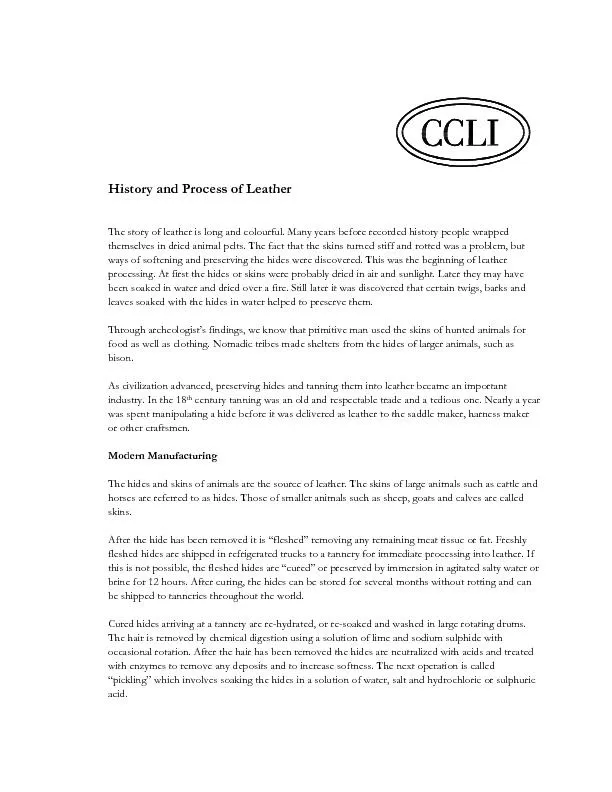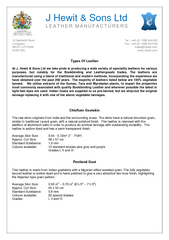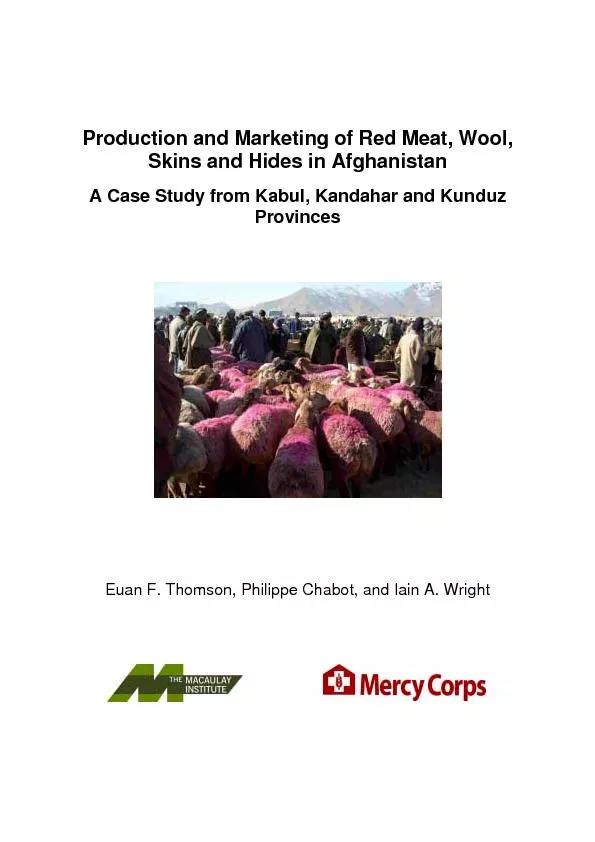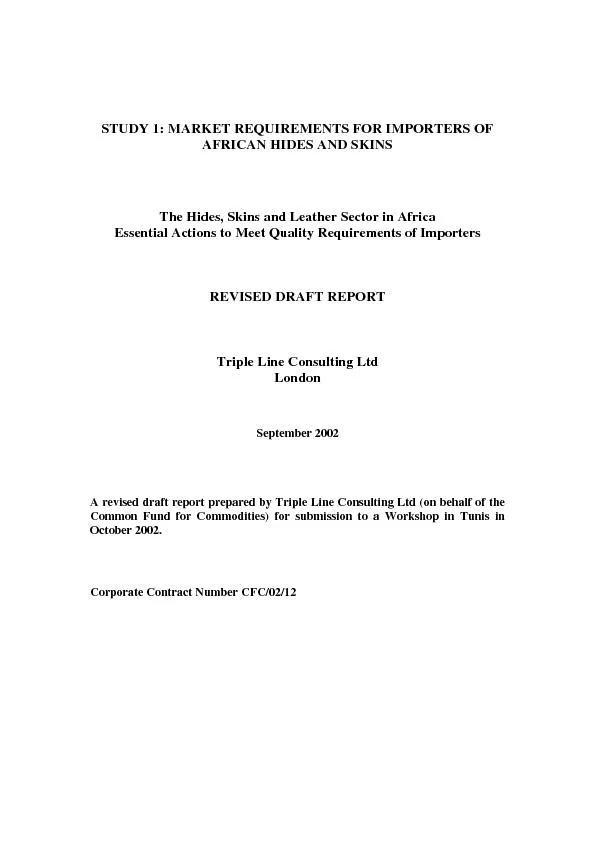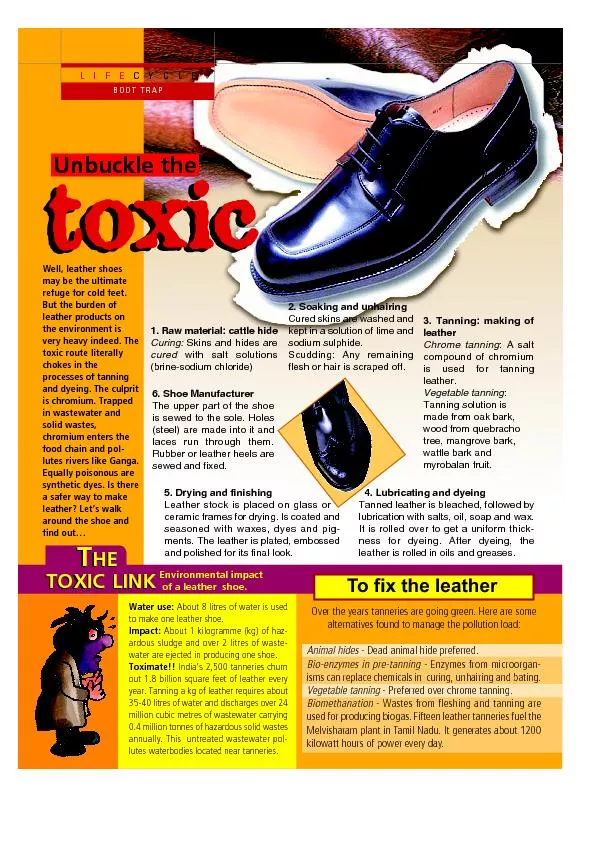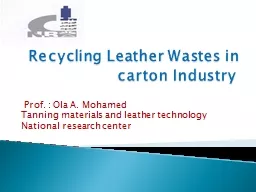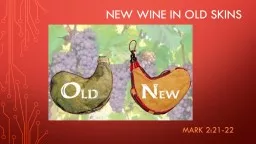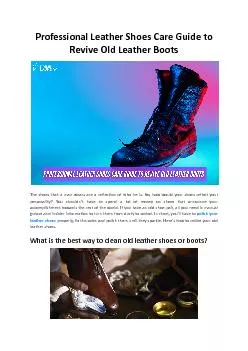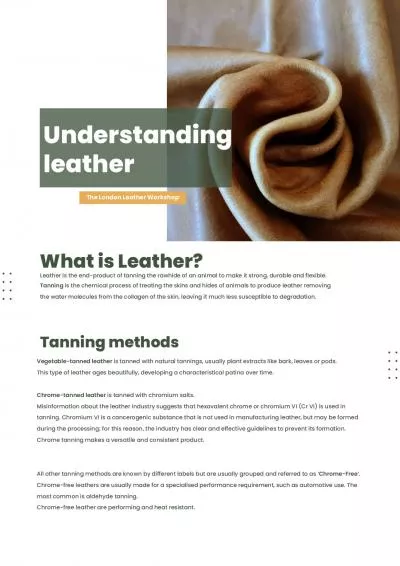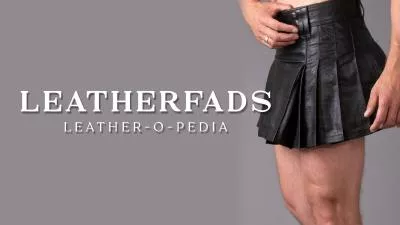PDF-is the final process in turning hides and skins into leather. There ar
Author : pasty-toler | Published Date : 2016-06-20
History and Process of Leather The story of leather is long and colourful Many years before recorded history people wrapped themselves in dried animal pelts The
Presentation Embed Code
Download Presentation
Download Presentation The PPT/PDF document "is the final process in turning hides an..." is the property of its rightful owner. Permission is granted to download and print the materials on this website for personal, non-commercial use only, and to display it on your personal computer provided you do not modify the materials and that you retain all copyright notices contained in the materials. By downloading content from our website, you accept the terms of this agreement.
is the final process in turning hides and skins into leather. There ar: Transcript
Download Rules Of Document
"is the final process in turning hides and skins into leather. There ar"The content belongs to its owner. You may download and print it for personal use, without modification, and keep all copyright notices. By downloading, you agree to these terms.
Related Documents

